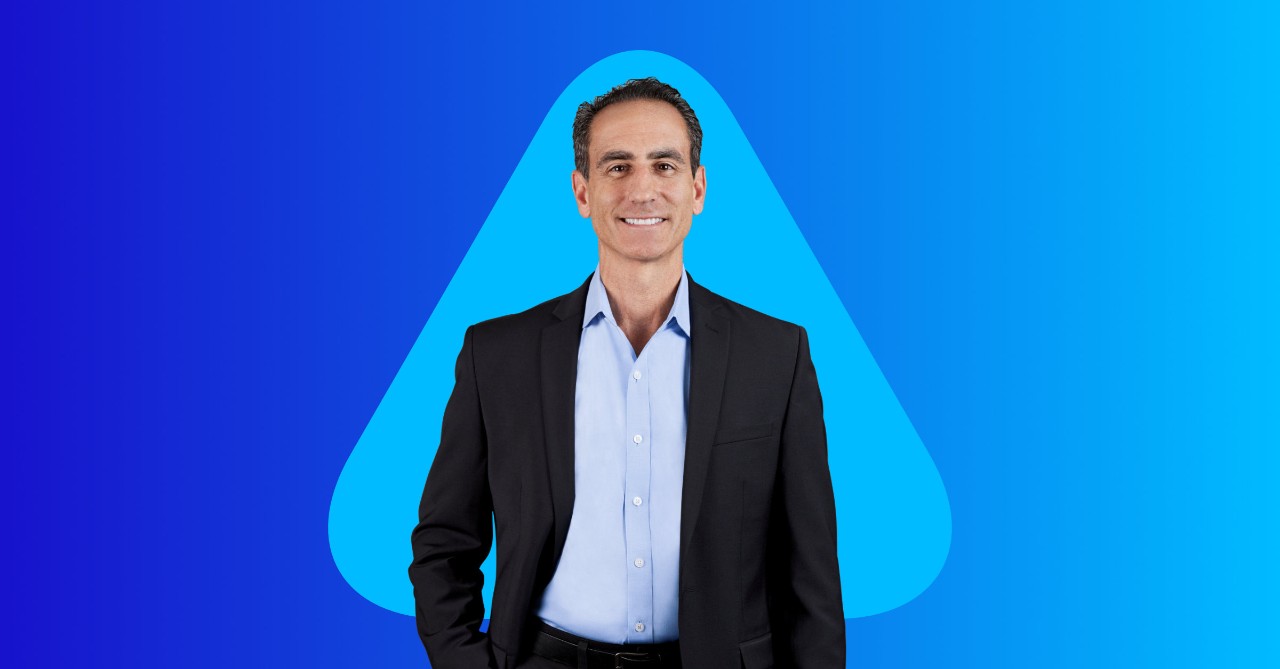The future of AI in business with Nick Colisto
By Nick Colisto - Jun 12, 2023
September 18, 2023

Sr. Vice President and Chief Information Officer, Corporate

Digital business transformation is an ongoing, dynamic process that evolves digitizing and optimizing existing processes while creating new business models and value. CIOs and application leaders strive to meet digital business demands by investing in new technologies. However, without strategic alignment and continuous modernization, companies can face legacy applications that hinder agility and velocity.
In this article, we explore the thoughts and insights of Nick Colisto, senior vice president and chief information officer at Avery Dennison, on the path to continuous modernization of business applications, the benefits, the challenges businesses face when modernizing, and how to overcome them.
So, let's dive in and explore the world of application modernization with Nick Colisto.
Q: Companies struggle with technical debt while attempting to meet the growing demands of becoming a digital business. What are your thoughts on what is happening with modernization?
The degradation of applications over time is a constant concern. This negatively impacts user experience, business agility and added cost and risk. As CIOs and application leaders face growing demands of becoming more digital and embracing technologies such as artificial intelligence, leaders must ensure that their applications continuously meet evolving business needs and keep pace with technological advancements.
Q: What are some ways that IT leaders can address this challenge?
Legacy applications and tools, though valuable, often pose challenges to the continuous delivery of value. Rip-and-replace efforts, while tempting, are known for their high costs, inherent risks, and time-consuming nature. Leaders should perceive legacy applications as assets to manage, not merely problems to eliminate. To optimize their utility, employ lifecycle management practices and continuously modernize. This approach enables companies to identify, prioritize, and implement improvements that generate additional value from these assets.
Q: What are the steps to implement life cycle management?
Life-cycle management programs streamline the application portfolio, optimizing efficiency, reducing complexity, and lowering the Total Cost of Ownership (TCO) through various improvements.
Leaders can employ the Gartner TIME model, a quick business-oriented assessment to segment their portfolio into four actionable quadrants: tolerate, invest, migrate, and eliminate. An Enterprise Architecture team typically leads the activity in cooperation with application owners and stakeholders in the divisions and functions. Applications are rigorously assessed on various business, technical, and cost fitness indicators. This three-dimensional evaluation determines overall application fitness or health, guiding the focus on applications that demand the utmost attention.
In some cases, the modernization effort includes re-architecting legacy applications and shifting them to the Cloud when scalability and cost-efficiency benefits can be realized. In other cases, it's about investing proactively in new features that enhance revenue and cost efficiency while extending the asset's life.
Application modernization empowers a company to embrace the digital business model by providing the flexibility, efficiency, and innovation needed to thrive in the digital age.
Q: How does application modernization contribute to a company becoming a digital business?
Becoming a digital business can mean different things to various individuals and companies. Embracing digitalization entails having the capability and eagerness to harness both established and emerging information technologies to enhance business outcomes. It involves utilizing digital tools to not only optimize existing operations but also to transform the way a company conducts business and create new net revenue streams.
Application modernization empowers a company to embrace the digital business model by providing the flexibility, efficiency, and innovation needed to thrive in the digital age. It ensures a company can adapt, grow, and remain competitive in a rapidly changing business landscape.
Q: Can you describe the adoption of modernization at Avery Dennison?
One of our IT strategic priorities is delivering productivity through continuous operational improvements and safeguarding our invaluable assets. Our other strategies include fostering team development, enabling profitable growth, cultivating digital fluency and capabilities, and advancing sustainability.
To support our priorities, we introduced UNITY, our internal, cloud-first IT architecture framework, in 2019. UNITY enables a comprehensive suite of capabilities, emerging technologies, and software platforms designed to empower our core business processes and modernize our technology.
UNITY has facilitated an impressive return on investment by enhancing revenue, cost efficiencies, customer satisfaction, employee engagement, and sustainability. These substantial benefits are a testament to our strategic investments in information technology and underscore the value of IT.
Q: How does governance fit into your application modernization efforts?
Governance is integral to modernization. It assures the value of UNITY platforms, their adoption, management of IT-related risks, and control over information. Our governance framework ensures that IT consistently enables our overarching business objectives.
Governance plays a pivotal role in the application rationalization process. Firstly, effective governance ensures alignment between IT initiatives and the company's strategic objectives. This means that application leaders and their teams can prioritize applications that directly contribute to the organization's goals, improving operational efficiency, reducing costs, or enhancing product quality. By defining clear criteria and decision-making processes, governance helps avoid the proliferation of redundant or obsolete applications, streamlining the IT landscape and maximizing resource utilization.
Secondly, governance provides transparency and accountability throughout the application rationalization journey. It establishes a structured framework for evaluating and categorizing applications based on business value, technical debt, and security risks. This not only facilitates informed decision-making but also ensures that stakeholders across the organization are involved and aware of the rationale behind application changes. Additionally, governance mechanisms can enforce compliance with industry regulations and data security standards, reducing potential risks and legal issues. In essence, governance empowers IT and the rest of the business to navigate the complex ecosystem of application rationalization in a systematic, controlled, and value-driven manner, ultimately driving the company's success.
Our unwavering commitment to managing and optimizing our application portfolio through UNITY, continual improvement, digital experiences, and robust governance is charting a course toward sustained success.
Q: How is the application portfolio managed and optimized within your organization?
Rationalizing our application portfolio is a shared responsibility among IT, business units, and other functions. We streamline the portfolio, optimize efficiency, reduce complexity, and lower the Total Cost of Ownership (TCO) through improvements guided by rigorous assessments.
As the CIO of a large, global company, effective management and optimization of the application portfolio are paramount. We align the portfolio with the company's strategic goals, ensuring that IT investments contribute directly to business objectives. We regularly assess and prioritize applications, retiring redundant or outdated systems while modernizing critical legacy ones. Data-driven insights and metrics to inform decisions, optimizing performance and value.
Security and compliance are top priorities as Avery Dennison is a publicly traded company, and we must apply robust cybersecurity measures and adhere to regulatory standards. Our team continuously monitors and reduces IT costs through cloud adoption and efficient resource allocation.
Fostering collaboration with stakeholders and engaging business leaders in the decision-making process helps us to ensure IT initiatives align with business needs. By implementing these strategies, we ensure that the application portfolio remains agile, secure, cost-effective, and aligned with Avery Dennison's profitable growth and innovation goals.
Q: What does the future hold for Avery Dennison's IT strategy with continuous modernization?
Our unwavering commitment to managing and optimizing our application portfolio through UNITY, continual improvement, digital experiences, and robust governance is charting a course toward sustained success. We are dedicated to achieving cost efficiencies, maintaining competitiveness, and thriving in our ever-evolving business landscape. With technology as our ally and innovation as our compass, the journey toward delivering productivity continues to unfold, promising a future of growth and success for Avery Dennison.
By Nick Colisto - Jul 05, 2023
By Nick Colisto - Apr 01, 2024